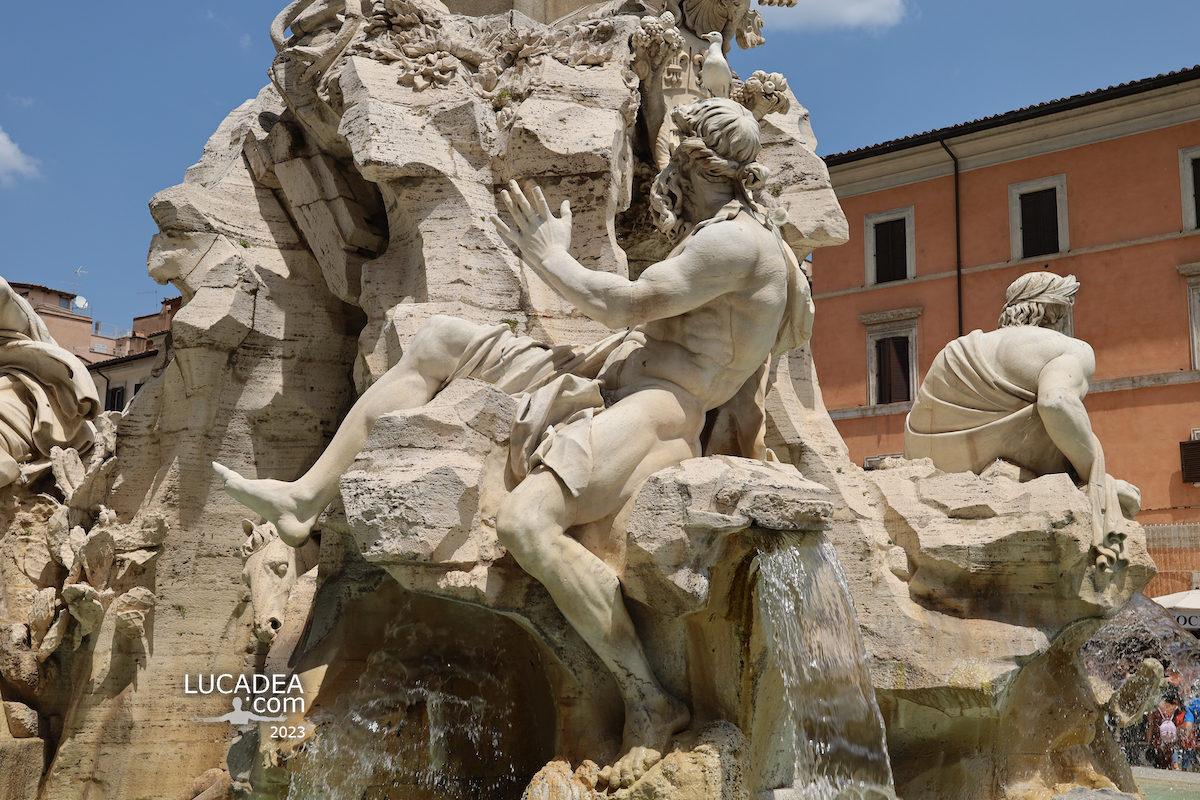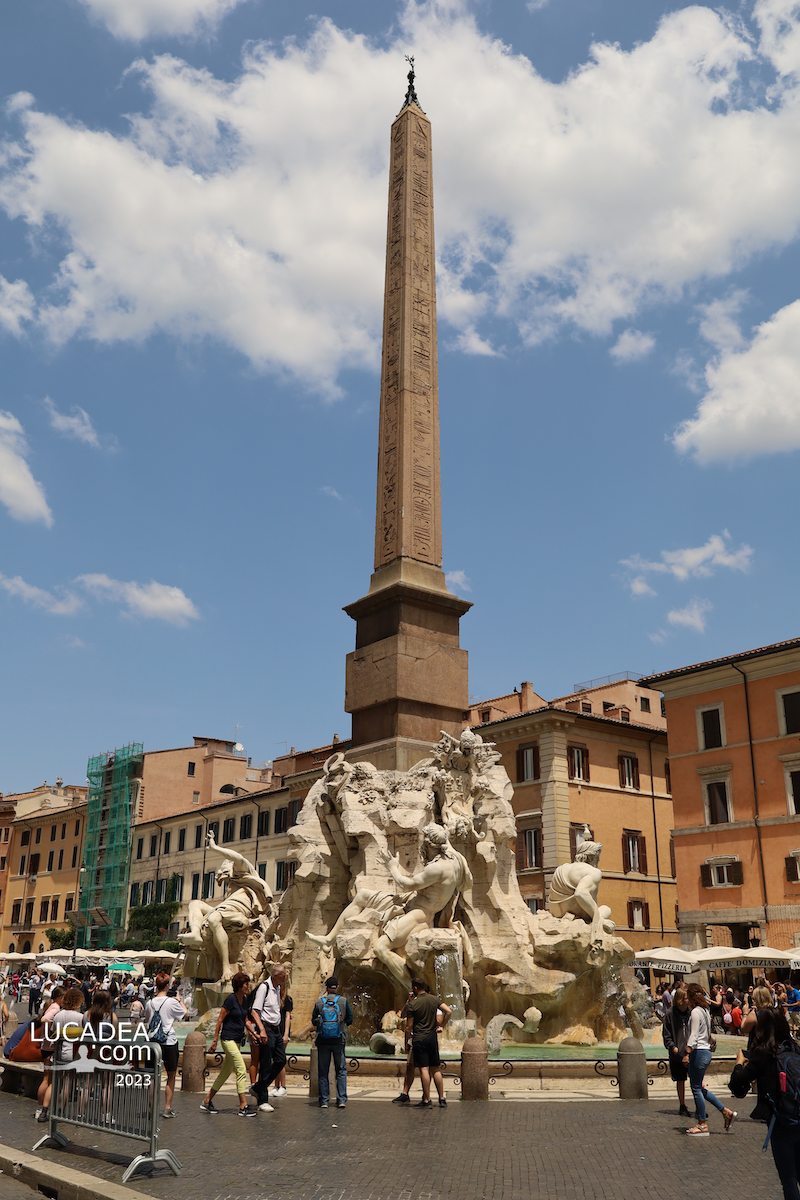The Fountain of the River Plate in the Fountain of the Four Rivers in Rome.
The Fountain of the Four Rivers is one of the most famous works of the Roman Baroque, located in Piazza Navona in Rome. Designed by Gian Lorenzo Bernini and completed in 1651, the fountain represents the four great rivers of the four continents known at the time: the Nile (Africa), the Ganges (Asia), the Danube (Europe) and the River Plate (Americas).
The figure of the River Plate represents the American continent and is located on the western side of the fountain. This figure is depicted as a robust and powerful man, leaning on a rock. Here are some specific characteristics:
The figure of the River Plate is stretched out and looks downwards, as if he were about to slide away. The posture suggests a sense of movement and dynamism.
The figure is surrounded by exotic objects that allude to the riches of the Americas. Among these objects, there is a bag of coins, symbolizing the abundance of resources such as silver, of which the river is a representation (the “Plata” in Spanish means “silver”).
At the foot of the figure is an armadillo, an animal typical of the South American regions, which further contributes to the geographical and symbolic context of the sculpture.
The face of the figure appears frightened, perhaps reflecting the idea of the “New World” as a land still largely unknown and mysterious to the Europeans of the time.
The Fountain of the Four Rivers is a masterpiece of engineering and art, not only for its aesthetic beauty but also for its symbolism. It represents the papal dominion and the centrality of Rome in the Catholic world of the time. Each river is represented in a way that reflects not only the geographical but also the cultural and political characteristics of their respective regions.
The Rio de la Plata, with its representation of wealth and sense of discovery, embodies the idea of America as a land of opportunity and mystery.
Do you know Rome and its monuments?
Add your own comment or go to the bottom of the site to read what other visitors have written.
Photo taken with Canon EOS RP and lens Canon RF 24-50.
Click here to see all the photos of Rome:

Here's where the fountain is located:
Tradition, which sees Bernini as a rival to his contemporary Borromini, has created the legend according to which the figure who represents the Rio de la Plata in the fountain raises his hand towards the church of Sant’Agnese opposite as a sign of defense against the imminent fall of the building. However, this remains only a legend since the construction of the church of Sant’Agnese in Agone began only later, in 1652.
Continue and learn more on Wikipedia
The fountain of the Rio de la Plata in the Fountain of the Four Rivers in Rome – La fontaine du Rio de la Plata dans la Fontaine des Quatre Fleuves à Rome – La fuente del Río de la Plata en la Fuente de los Cuatro Ríos en Roma – A fonte do Rio de la Plata na Fonte dos Quatro Rios em Roma – Der Brunnen des Rio de la Plata im Vierströmebrunnen in Rom – Đài phun nước Rio de la Plata trong Đài phun nước Bốn con sông ở Rome
The text of the post was written with the help of ChatGPT, a language model from OpenAI.






